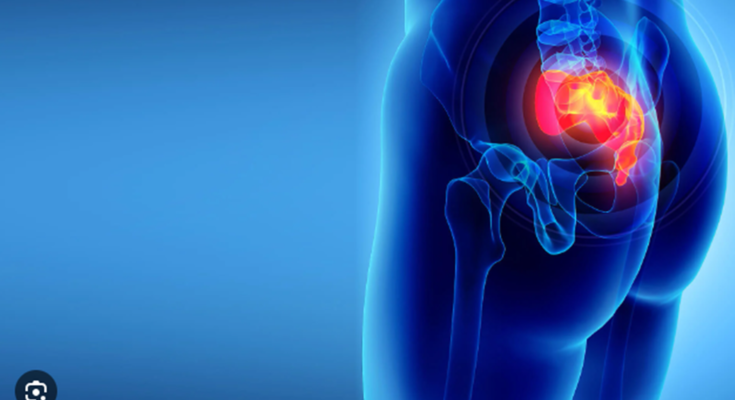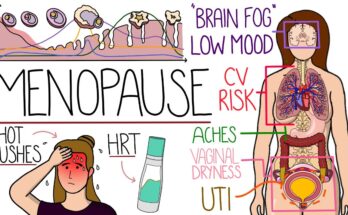Pilonidal Cyst Treatment: A pilonidal cyst is a common health condition that typically affects the natal cleft, located at the upper part of the buttocks.
Known for its recurrent nature and potential for infection, understanding both the diagnosis and treatment of a pilonidal cyst is crucial for effective management and prevention of complications.
Understanding Pilonidal Cysts
Pilonidal cysts are a common, though often uncomfortable, health issue that affects many individuals. Understanding the characteristics, causes, risk factors, and symptoms of pilonidal cysts can help in identifying and managing this condition effectively.
Characteristics of Pilonidal Cysts
Pilonidal cysts are:
- Abnormal Pockets: These cysts are abnormal pockets in the skin that typically contain hair and skin debris.
- Location: They are most commonly located near the tailbone at the top of the buttocks crease.
- Size Variation: The size of pilonidal cysts can vary significantly; some are small and inconspicuous, while others may become large and painful.
- Infection Prone: These cysts can become infected and turn into painful abscesses if not treated properly.
Common Causes and Risk Factors
The development of pilonidal cysts can be influenced by several factors:
- Excessive Sitting: Spending long periods seated, particularly on hard surfaces, is a significant risk factor.
- Hair: They are more likely to occur in people with thick or coarse body hair.
- Friction and Pressure: Activities that cause friction or pressure on the buttocks area, such as bike riding, can increase the risk.
- Age and Gender: Young adults and males are more frequently affected.
- Poor Hygiene: Insufficient hygiene can contribute to the development and infection of a pilonidal cyst.
- Obesity: Higher body weights can increase the risk of developing these cysts due to added pressure and possible skin irritation in the buttocks area.
Symptoms Indicating the Presence of a Pilonidal Cyst
Recognizing the symptoms of a pilonidal cyst is crucial for early treatment and management:
- Pain: The area around the tailbone can be painful, especially when sitting or standing.
- Swelling: The site of the cyst may swell significantly.
- Redness: The skin over the cyst often appears red and irritated.
- Drainage: Pus or blood draining from an opening in the skin is a common symptom, especially if the cyst becomes infected.
- Foul Smell: An unpleasant odor can accompany the drainage from an infected pilonidal cyst.
- Fever: In some cases, an infection in the cyst can lead to a fever as the body tries to fight the infection.
If you suspect you have a pilonidal cyst, consulting with a healthcare professional is recommended to get appropriate care and avoid complications.
Diagnosing Pilonidal Cysts
Here’s a straightforward guide to understanding how pilonidal cysts are diagnosed, including the steps involved, the medical professionals you might encounter, and the diagnostic tools commonly used.
Steps in Diagnosing a Pilonidal Cyst
- Medical History and Symptoms Review: The diagnosis process begins with the doctor discussing your symptoms and medical history. They will ask about the duration of symptoms, any previous occurrences, and if there’s been any recent trauma to the area.
- Physical Examination: The doctor will examine the affected area to check for signs of pilonidal cysts, such as swelling, redness, and discharge. The presence of hair in the sinus (the cavity that may form under the skin) is also a key indicator.
- Assessment of Severity: If a cyst is present, its size, depth, and the extent of infection or inflammation are assessed to determine the severity of the condition.
Medical Professionals Involved in the Diagnosis
- General Practitioner (GP): Often, the first medical professional to assess symptoms and either provide a diagnosis or refer to a specialist.
- Dermatologist: A specialist in skin conditions who can provide further insight, particularly in complex or recurrent cases.
- Colorectal Surgeon: In cases where surgical intervention is necessary, a colorectal surgeon may be consulted for diagnosis and treatment.
Diagnostic Tools and Tests Commonly Used
- Ultrasound: This imaging test helps in visualizing the cyst more clearly, particularly its depth and the surrounding tissue structure.
- MRI Scan: Magnetic Resonance Imaging can be utilized for detailed imaging, especially if the pilonidal cyst’s anatomy is complex or there are associated complications.
- Blood Tests: While not always necessary, blood tests can help detect signs of infection such as elevated white blood cell count.
However, diagnosing pilonidal cysts typically involves a combination of a thorough physical examination, detailed patient history, and possibly imaging tests.
Treatment Options for Pilonidal Cysts
Understanding the right treatment can significantly improve a patient’s quality of life. This guide will outline the goals of treating pilonidal cysts and discuss both non-surgical and surgical treatment options.
Goals of Treatment for Pilonidal Cysts
The primary goals for treating pilonidal cysts include:
- Alleviating Pain: Reducing discomfort and pain that comes with the cyst.
- Preventing Infection: Keeping the area clean to prevent infection from developing.
- Minimizing Recurrence: Reducing the chances of the cyst returning after treatment.
- Promoting Healing: Encouraging the wound to heal properly and swiftly.
Non-Surgical Treatments
For many patients, non-surgical treatments provide relief and manage the condition effectively, especially when the cyst is detected early. Here are some common non-surgical approaches:
- Antibiotics: Used to treat or prevent infection if the cyst is infected.
- Hot Compresses: Regular application of hot compresses can help drain the cyst and reduce swelling.
- Hair Removal: Removing hair around the area can prevent further irritation and reduce the risk of recurrence. This can be done through shaving, laser hair removal, or using hair removal creams.
- Proper Hygiene: Keeping the area clean and dry is crucial for healing and preventing infection.
- Injection Therapy: Injections with steroids or other agents can reduce swelling and promote healing.
Surgical Treatments
When non-surgical treatments are not effective, or the cyst recurs frequently, surgical options may be considered. Surgical interventions vary in complexity and can include:
- Incision and Drainage: This procedure involves making a cut over the cyst to drain it. It’s typically a short-term solution, as the recurrence rate is high.
- Excision of the Cyst: The entire cyst and surrounding tissue are removed. This can be done through several methods, such as a simple excision, which is straightforward, or a more complex procedure like a rhomboid flap procedure.
- Laser Surgery: A minimally invasive technique that uses laser to remove the cyst and affected tissue, offering a quicker recovery and less pain.
- Endoscopic Pilonidal Sinus Treatment (EPSiT): This is a less invasive surgical option where an endoscope is used to remove the cyst, which also allows for faster healing and less post-operative pain.
However, each treatment option has its advantages and potential drawbacks. A healthcare provider can help determine the most appropriate treatment based on the specific characteristics of the pilonidal cyst and the patient’s overall health.
Recovery and Management Post-Treatment
After undergoing treatment for a pilonidal cyst, understanding the recovery process and implementing effective management strategies is essential for healing and preventing recurrence. This section offers guidance on what to expect post-treatment, tips for recovery, and long-term lifestyle adjustments.
What to Expect After Treatment of a Pilonidal Cyst
- Mild to Moderate Pain: Initially, you may experience discomfort in the treated area, especially during the first few days post-surgery.
- Drainage from the Surgical Site: Some drainage or bleeding is normal. Your doctor might place a dressing over the area to manage this.
- Limited Mobility: Your mobility might be temporarily restricted, and sitting for long periods may be uncomfortable.
- Follow-up Visits: Expect several follow-up appointments to ensure the area is healing properly and to remove sutures if necessary.
- Healing Time: The healing process can vary, typically taking several weeks to a few months depending on the extent of the surgery and your body’s healing response.
Tips for Recovery and Preventing Infection
- Keep the Area Clean and Dry: Gently clean the surgical site with mild soap and water during showers and dry it thoroughly.
- Change Dressings Regularly: Follow your doctor’s instructions on how often to change the dressing to prevent infection and promote healing.
- Avoid Prolonged Sitting: Reduce pressure on the tailbone area by standing or lying down more frequently.
- Take Prescribed Medications: Use pain relievers and antibiotics as prescribed to manage pain and prevent infection.
- Monitor for Signs of Infection: Watch for increased redness, swelling, pain, or drainage, and report these symptoms to your healthcare provider immediately.
Long-term Management and Lifestyle Adjustments to Prevent Recurrence
- Maintain Good Hygiene: Regular washing and keeping the area free of hair by shaving or using hair removal creams can reduce the risk of recurrence.
- Healthy Weight Management: Maintaining a healthy weight can decrease the risk of pilonidal cysts due to reduced pressure and friction in the tailbone area.
- Adjust Sitting Habits: Use cushions or gel pads when sitting for extended periods, and take frequent breaks to stand and stretch.
- Regular Check-ups: Regular visits to your healthcare provider for check-ups can help catch any recurring issues early.
- Diet and Exercise: A balanced diet and regular exercise can improve overall health and aid in the prevention of pilonidal cyst recurrence by boosting the immune system and maintaining healthy skin.
By adhering to these recovery tips and making necessary lifestyle adjustments, you can enhance your healing process and significantly reduce the likelihood of a pilonidal cyst returning.
Complications of Pilonidal Cyst Treatment
Pilonidal cysts are painful conditions typically located near the tailbone, and their treatment varies depending on the severity and recurrence. While many treatments are successful, some may lead to complications. It is crucial to be aware of these potential issues, which can differ based on the treatment method chosen.
Common Complications Associated with Different Treatment Methods
1. Surgical Excision:
- Infection: Despite the cleanliness of surgical environments, any surgery can introduce bacteria, leading to infection at the excision site.
- Recurrence: Even after complete surgical removal, pilonidal cysts can recur, particularly if post-surgical care guidelines are not followed.
- Delayed healing: Healing from surgery can be slow, especially if the surgical wound is large or not properly cared for.
- Scarring: Surgical treatment often results in scarring, which can be significant due to the depth and location of the excision.
2. Lancing (Incision and Drainage):
- Temporary relief: Lancing provides immediate relief but is a temporary solution; the cyst may refill and require further intervention.
- Infection: The area can become infected, particularly if not properly maintained after the procedure.
- Pain: Pain during and after lancing can be significant, although it usually subsides with proper care and pain management.
3. Laser Therapy:
- Skin burns: Improperly administered laser therapy can cause burns on the surrounding skin.
- Recurrence: While less invasive, laser therapy may not fully eradicate the cyst, leading to recurrence.
4. Phenol Injection:
- Chemical reactions: Phenol is a potent chemical that can cause reactions, including skin irritation or damage at the injection site.
- Ineffectiveness: In some cases, phenol injections do not prevent the recurrence of the cyst.
Signs of Complications that Require Immediate Medical Attention
- Increased pain: Pain that intensifies or does not improve after treatment can indicate an infection or other complications.
- Fever: A fever following any treatment for a pilonidal cyst is a sign of possible infection.
- Redness and swelling: Excessive redness, swelling, or warmth at the treatment site may also signal infection.
- Pus or foul-smelling discharge: Any discharge, especially if it is foul-smelling, should be checked by a healthcare provider.
- Bleeding: Persistent or heavy bleeding from the treatment site requires immediate medical attention.
Awareness of these complications and their signs ensures timely intervention and better outcomes following pilonidal cyst treatment. If you experience any of these symptoms, contact your healthcare provider promptly.
When to See a Doctor
Determining when to seek professional medical advice is crucial for effectively managing health concerns like pilonidal cysts. If you’re unsure whether it’s time to consult a healthcare provider, here are some key indicators and the importance of regular follow-ups.
Recognizing When Professional Medical Advice is Needed
- Increased Pain and Discomfort: If the pain or discomfort around the pilonidal cyst area worsens, it could indicate an infection or complication. Seek medical advice if over-the-counter pain relief does not help.
- Infection Signs: Redness, swelling, pus, or a foul odor emanating from the cyst are strong indicators of infection. These symptoms require immediate attention from a healthcare professional.
- Recurring Issues: If you’ve previously been treated for a pilonidal cyst but symptoms reappear, it’s important to consult your doctor. Recurrence can suggest the need for further treatment or a different management approach.
- Interference with Daily Activities: When a pilonidal cyst begins affecting your ability to sit, walk, or participate in daily activities comfortably, it’s time to see a doctor.
- Fever or General Malaise: Experiencing a fever or a general feeling of unwellness can be signs of a systemic infection, necessitating prompt medical evaluation.
The Role of Regular Follow-Ups in Managing Pilonidal Cysts
Regular follow-ups with a healthcare provider play a pivotal role in the management of pilonidal cysts, particularly for individuals who experience frequent recurrences or chronic symptoms. These visits allow for:
- Monitoring Progress: Regular assessments can help track the healing process or note any changes in the condition, enabling timely interventions.
- Adjusting Treatment Plans: Based on your progress, your doctor might modify your treatment strategy—whether it involves medication adjustments, lifestyle changes, or considering surgical options.
- Preventive Care: Follow-ups serve as a preventive measure to manage symptoms before they become severe, reducing the likelihood of complications like severe infections.
- Education and Support: These sessions provide an opportunity to discuss concerns, get advice on home care techniques, and receive emotional support, especially if surgical interventions become necessary.
If you’re experiencing any signs of complications or if it’s time for a routine check-up, don’t hesitate to contact your healthcare provider. Regular medical advice and timely interventions are key to managing conditions like pilonidal cysts effectively.
FAQs about Pilonidal Cyst Treatment
What is a pilonidal cyst?
A pilonidal cyst is a skin condition that occurs near the tailbone or lower spine, where small skin pits or hair follicles become infected, creating a tender, swollen area. It is common among young adults and can cause significant discomfort.
What causes a pilonidal cyst?
The exact cause of pilonidal cysts is not fully understood, but they are believed to be primarily caused by friction and pressure on the area combined with hair penetration. This condition is more prevalent in people who sit for long periods, have excessive body hair, or sweat excessively.
What are the symptoms of a pilonidal cyst?
Symptoms of a pilonidal cyst include pain at the bottom of the spine, swelling, redness, and sometimes pus or blood drainage from an opening in the skin. The area may also feel tender to the touch.
How is a pilonidal cyst diagnosed?
Diagnosis typically involves a physical examination. Your doctor will examine the affected area to determine if there is a cyst. In some cases, imaging tests may be recommended to rule out other conditions.
What are the treatment options for a pilonidal cyst?
Treatment options vary depending on the severity of the condition. They include:
- Incision and drainage: This is often the first step if the cyst is infected.
- Antibiotics: Prescribed if there is a severe infection.
- Surgery: In cases where cysts recur frequently, surgery to remove the cyst may be recommended.
Can a pilonidal cyst go away on its own?
A pilonidal cyst might resolve on its own if it drains naturally. However, medical intervention is often necessary to prevent recurrence and manage infection.
How can I prevent a pilonidal cyst?
Preventive measures include maintaining good hygiene, avoiding prolonged sitting, keeping the area clean and dry, and managing body hair through regular grooming.
When should I see a doctor for a pilonidal cyst?
You should consult a healthcare provider if you experience severe pain, notice an abscess, or if there are signs of infection such as fever, redness, and drainage of pus. Early treatment can prevent complications.
Conclusion
In summary, treating a pilonidal cyst effectively involves understanding the various options available, ranging from non-surgical methods like antibiotics and lifestyle changes, to surgical interventions for more severe cases.
It is crucial to recognize the early signs of this condition and seek prompt medical advice. Monitoring symptoms closely and adhering to your healthcare provider’s guidance can prevent complications and lead to a swift recovery.
If you suspect you have a pilonidal cyst, do not hesitate to consult a medical professional. Early treatment is key to managing symptoms and improving your quality of life.
References
For those seeking further reading and to validate the information provided about pilonidal cyst treatment, the following reputable sources are recommended:
- American Society of Colon and Rectal Surgeons (ASCRS) – This site offers comprehensive guidelines and the latest research on the management and treatment of pilonidal cysts. Visit ASCRS
- Mayo Clinic – Known for its patient-friendly approach to medical conditions, Mayo Clinic provides detailed insights into the symptoms, causes, and treatment options for pilonidal cysts. Explore Mayo Clinic
- National Health Service (NHS UK) – The NHS website includes a section on pilonidal cysts, offering advice on prevention, symptoms, and various treatment paths, supported by the UK’s healthcare framework. Read More at NHS
These sources are reliable for obtaining up-to-date medical advice and information on the latest treatments for pilonidal cysts, helping patients make informed decisions about their health care.



